Influential French filmmaker Agnès Varda, whose innovative, unconventional films La Pointe Courte, Cleo from 5 to 7, and Le Bonheur helped define France’s New Wave cinema, has been named the recipient of the Writers Guild of America West’s 2019 Jean Renoir Award for International Screenwriting Achievement, which recognizes an international writer who has advanced the literature of motion pictures and made outstanding contributions to the profession of screenwriter.
Varda will be honored at the WGAW’s 2019 Writers Guild Awards L.A. show on Sunday, February 17.
“The Jean Renoir Award was made for Agnès Varda. She is one of our industry’s pioneers, a revolutionary artist who paved the roads of filmmaking. Her films are relentlessly curious, complex and challenging, and her body of work continues to influence modern filmmakers and resonate with modern audiences. The Board of Directors is thrilled to give her this honor,” said WGAW President David A. Goodman.
Varda’s prolific, groundbreaking body of work has been defined by a documentary realism, a feminist sensibility, and a focus on social commentary, all charged by her own signature experimental style, including her then-innovative use of on-location shooting, non-professional actors, and other techniques.
Born in 1928 in Belgium, Varda changed her named from Arlette to Agnès at age 18. She initially studied art history before making the transition to photography. After embarking on a career as a photographer, shooting typical subjects such as families and weddings, she soon emerged as one of the leading voices of Left Bank cinema and the French New Wave, or Nouvelle Vague, while maintaining a life-long, symbiotic interrelationship between photo and cinematic forms. As she once remarked, “I take photographs or I make films, or I put the films in the photos, or photos in the films,” as one medium informed the other and vice versa.
After Jean Vilar hired her as the official photographer of France’s Théâtre National Populaire, where she worked for a decade from 1951-61, she traveled throughout Europe earning a reputation as an in-demand photo-journalist with a sharp eye.
In fact, her early photography would inspire her subsequent narrative films and documentaries she wrote and directed, beginning with her seminal debut, 1955’s La Pointe Courte. Without filmmaking experience or even attending film school, Varda prepped her creative vision by photographing every element that she intended to film, carefully framed photos which served as models for shots in the film in terms of content and composition, tone and meaning. Describing her filmmaking style as cinécriture (i.e., cinematic writing or writing on film), Varda wielded her camera like a pen, as her newly created term merged “cinema” and “writing” in French.
While the French New Wave was divided into two subgroups – the Cahiers du Cinema and Left Bank cinema – due to her literary influences and because her work predates the movement, Varda’s films belong to Rive Gauche (Left Bank) cinema, viewed as the more experimental of the two schools. Varda and other Left Bank filmmakers developed a style of filmmaking that integrated documentary techniques with the avant-garde, often collaborating with each other.
Her first film, 1955’s La Pointe Courte, intertwining two stories – one macro, with sequences focusing on daily life in a small French fishing village, and the other micro, centering on couple working through their relationship – is widely considered the first film of the Nouvelle Vague movement, and one of the many she would create that focused on ordinary people, their issues, their lives, their faces. Fellow French filmmaker Francois Truffaut hailed it as “an experimental work, ambitious, honest, and intelligent.”
After La Pointe Courte, she shot a series of documentary shorts before following-up with her next feature film, 1962’s Cleo from 5 to 7, once again employing a mix of documentary and narrative techniques, this time tracking a popular singer during two real-time hours as she waits for the results of a recent biopsy. Rejecting the typical objectification of women seen in most movies of the era, Varda imbues Cleo with her own singular vision, unable to be constructed through the gaze of others around her. This challenging film was followed by 1965’s slightly more traditionally structured drama Le Bonheur, which lyrically depicts ordinary life as simultaneously mundane and poetic, and subsequently 1966’s The Creatures.
While living and working in Paris, Varda met her husband, French director-screenwriter Jacques Demy, known for his own sumptuous musicals The Umbrellas of Cherbourg and The Young Girls of Rochefort. The couple married in 1960 and remained together until Demy’s untimely death in 1990 at age 59.
Varda has been considered a feminist filmmaker due to her frequent inclusion of female protagonists, as well as her development of a distinct female cinematic voice – as French film critic Delphine Benezet calls Varda “au feminin singulier,” a woman of singularity and of the utmost importance in film history, all the while embracing her own femininity on her own terms. In 1975 she founded her own production company, Cine-Tamaris.
In 1984, Varda delivered one of her mid-career masterpieces, the bleak, uncompromising Vagabond, a docu-style drama exploring the mysterious, if inevitable death of a young female drifter. Employing non-linear techniques, interviews and flashbacks, the film is divided into 47 episodes, each told from a different person’s point of view, and earned her the Venice Film Festival’s Golden Lion.
Shortly after her husband’s death, Varda created the film Jacquot de Nantes (1991), a loving tribute to her late husband which recreates his early life – a portrait of the artist as a young man, if you will – incorporating documentary elements by including poignant footage of the real-life dying Demy. In 1995, she also created another tribute to her late husband, The World of Jacques Demy.
Notable for its decidedly fragmentary, free-form approach, 2000’s The Gleaners and I is a documentary chronicling all types of “gleaners,” whether harvesters who live in the French countryside or artists who scour the dumpsters in Paris to create art utilizing recycled materials.
In 2009, Varda created her own kind of cinematic memoir with the acclaimed documentary feature, The Beaches Agnès, which explores her colorful past via memories, photographs, film clips, reenactments, home movies, contemporary interviews, and her own commentary as she narrates the story of her life, or at least how she remembers it. The masterful, layered film earned her a Cesar Award, France’s national film award.
Most recently, Varda co-directed the acclaimed documentary, Faces Places (2017), with artist JR, traveling through rural France and creating portraits of those people they come across along the way. The film earned the pair a 2018 Oscar nomination for Best Documentary Feature, making Varda the oldest person ever to be nominated for a competitive Oscar (only a few days older than fellow Oscar nominee, Call Me By Your Name screenwriter James Ivory), as well as garnered France’s Lumiere Award.
Beyond her numerous, acclaimed documentary short films she continued to create throughout her career, Varda’s additional notable films include 1976’s Daguerréotypes, featuring portraits of locals who occupy the small shops along Paris’ Rue Daguerre, where the filmmaker lived for many years, 1977’s One Sings, the Other Doesn’t, involving the intertwined lives of two women in 1970’s France set against the progress of the women’s movement, a key personal interest to Varda, 1981’s Documenteur, 1988’s Le petit amour (starring Jane Birkin, Varda’s son Mathieu Demy, and Charlotte Gainsbourg) and its thematic companion piece, Jane B. for Agnès B., an “imagined biopic” of singer-actress and fashion icon Birkin, 1995’s cinema-centric comedy One Hundred and One Nights, and 2004’s Cinevardaphoto, a triptych of short films exploring the power and vitality of the photograph. On the small screen, 2011’s Agnès Varda: From Here to There is an absorbing, five-part doc miniseries which chronicles the filmmaker’s travels around the world, meeting friends, artists, and filmmakers along the way to create an expansive view of the global contemporary art scene.
Even at age 90, Varda is not yet done creating: her upcoming documentary film, Varda to Agnès, selected to premiere at the Berlinale Festival and due out later in 2019, explores her experience as writer-director, illuminating personal insight into her form of “cine-writing,” as she travels from Paris to Los Angeles to Beijing.
In spite of her rather unorthodox style, or more likely because of it, Varda has earned numerous accolades over the course of her decades-long career: In 2001, she received an honorary César Award. In 2002, she received the French Academy’s René Clair Award. In 2007, she was appointed a Grand Officer of the National Order of Merit of France – and later promoted to Grand Cross in 2013. In 2009, she was made Commandeur de la Légion d’honneur – and was promoted to Grand Officer in 2017. In 2013, she received a FIFA Award for her work in film preservation and restoration. In 2014, she received the European Film Academy’s Lifetime Achievement Award – and in 2015, she was the first woman to receive an honorary Palme d’or (Golden Palm), the highest prize awarded at the Cannes Film Festival. In 2017, Varda received an Academy Honorary Award for her contributions to cinema, making her the first female filmmaker to receive AMPAS’ special award.
In 2003, Varda launched her third career as a visual artist. Her installations have been shown at the Venice Art Biennale and Lyon Biennale of Contemporary Art, SMAK in Ghent, Art 41 Basel, the Fondation Cartier pour l’Art Contemporain, Paul Valéry Museum in Sète, CAFA in Beijing, and Nathalie Obadia Gallery in Paris. In 2013, LACMA hosted Varda’s first U.S. art exhibition, entitled Agnès Varda in Californialand, featuring sculptural installations, photos, and short films, all inspired by the time she spent in Los Angeles during the ’60s, as well as the Blum & Poe gallery in 2017 in New York.
Varda has two children: a daughter, Rosalie Varda-Demy, who manages the family company and produced Faces Places, and a son, actor-writer-director Mathieu Demy (Americano), who has appeared in several of his mother’s films.
Named after the influential French filmmaker, the WGAW’s Jean Renoir Award for Screenwriting Achievement honors international screenwriters working outside the U.S. and in other languages. Previous Jean Renoir Award honorees include Italian screenwriters Suso D’Amico (2009) and Tonino Guerra (2011), Japanese filmmakers Akira Kurosawa, Shinobu Hashimoto, Ryûzô Kikushima, and Hideo Oguni (2013), Spanish filmmaker Pedro Almodóvar (2015), and Iranian filmmaker Abbas Kiarostami (2017).
Photo credit: ciné-tamaris

Movie
Wicked Soars As A Dazzling Spectacle
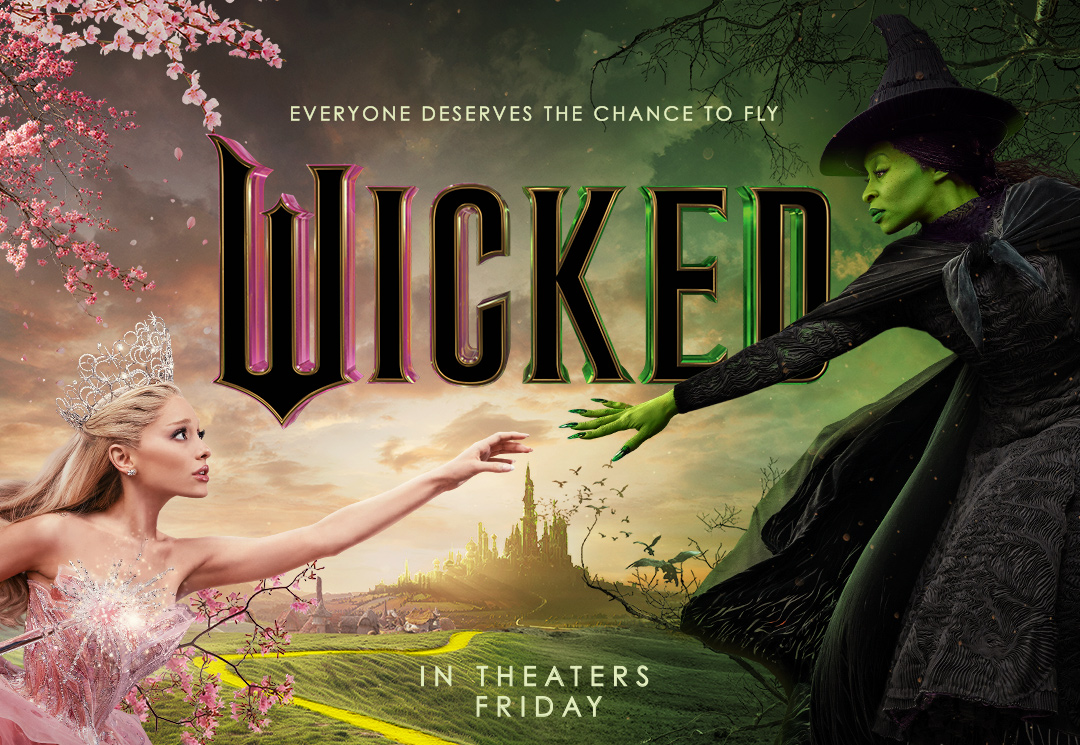
Jon M. Chu’s Wicked, the long-awaited cinematic adaptation of the Broadway musical, soars as a dazzling spectacle that captivates audiences with its lush visuals, heartfelt performances, and rich storytelling. The film, the first in a two-part series, delves into the origins of Elphaba and Glinda, exploring their unlikely friendship and the events that transform them into the Wicked Witch of the West and Glinda the Good.
Cynthia Erivo (Elphaba) and Ariana Grande (Glinda) lead the cast with exceptional performances. Erivo’s powerful vocals and nuanced portrayal of Elphaba’s internal struggles bring depth to the character. Grande, in her most notable film role to date, is both hilarious and heartfelt as Glinda, perfectly capturing her charm and comedic timing. Supporting performances by Jonathan Bailey (Fiyero), Michelle Yeoh (Madame Morrible), and Jeff Goldblum (the Wizard) add layers to the narrative, enriching the world of Oz with compelling subplots.
Chu, known for his work on Crazy Rich Asians and In the Heights, brings his signature style to Wicked, blending vibrant visuals with emotional resonance. The production design by Nathan Crowley is stunning, vividly rendering Oz with grandeur, from the Emerald City to Shiz University. Paul Tazewell’s costume design is equally striking, updating the Broadway look with cinematic flair. The score, by Stephen Schwartz and John Powell, retains iconic musical numbers like “Defying Gravity” while incorporating new arrangements that heighten their cinematic impact.
Critics have hailed Wicked as one of the best musical-to-film adaptations in decades, rivaling Chicago and Mamma Mia. Chu’s decision to split the adaptation into two parts allows for a deeper exploration of the story, giving audiences time to connect with the characters and their journeys. Fans of the Broadway show will appreciate its faithfulness to the source material, while newcomers will be enchanted by its universal themes of acceptance, ambition, and friendship.
With Wicked, Jon M. Chu has delivered a masterpiece that sets a new standard for musical adaptations. The film is a visual and emotional triumph, showcasing unforgettable performances and a meticulously crafted world. Whether you’re a fan of the original musical or new to the story, Wicked is a must-see cinematic event.
Rating: 3.5/5
Streaming
Movie Review: Devara Part 1 (Streaming on Netflix)
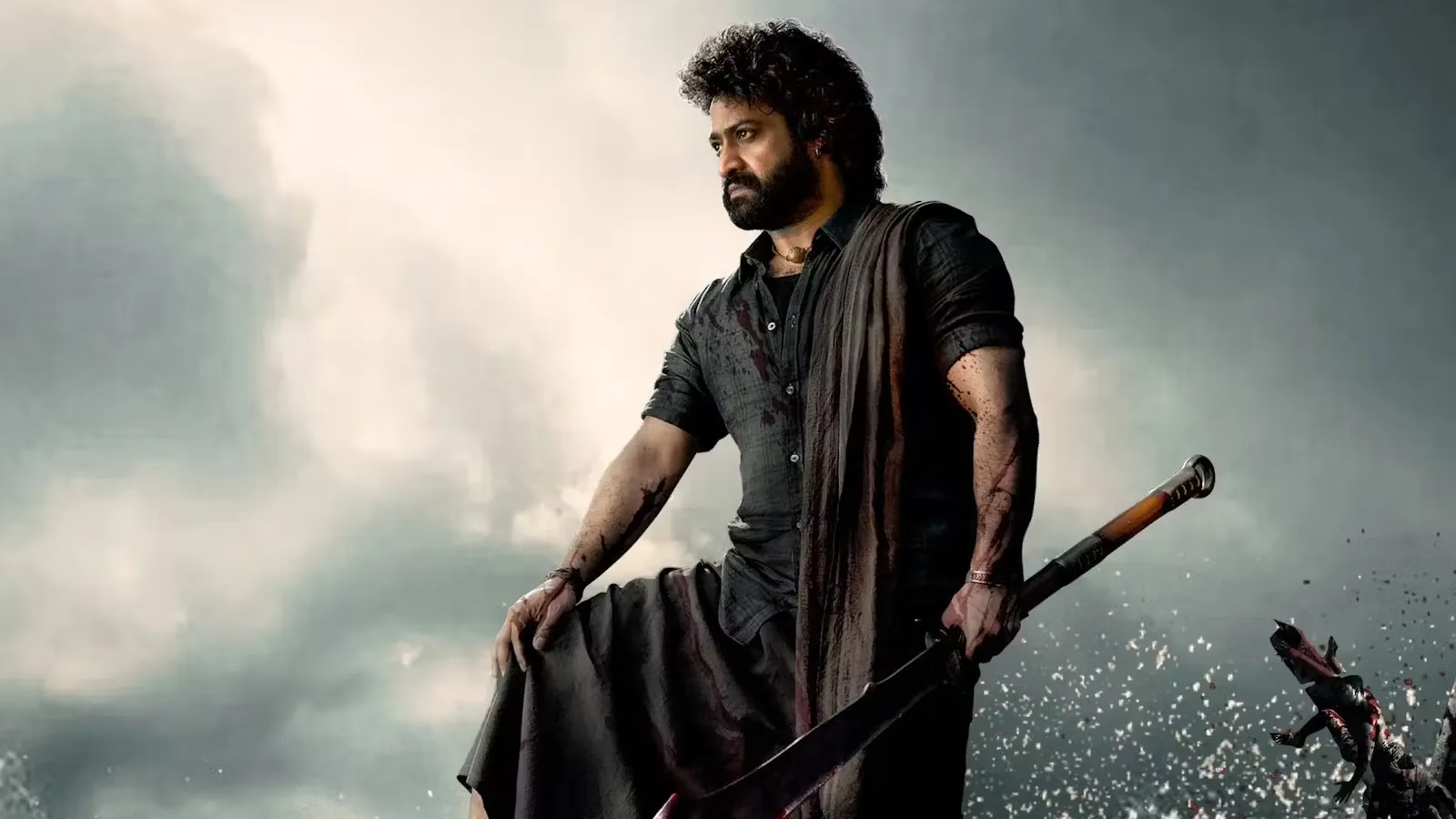
Devara Part 1 dives deep into the heart of coastal India, merging high-stakes action with rich, emotional storytelling. Directed by Koratala Siva, this movie delivers both visually arresting cinematography and a gritty, dramatic narrative that examines the impact of power, loyalty, and revenge. The film stars Jr. NTR as Devara, alongside Saif Ali Khan and Janhvi Kapoor, both in pivotal roles. With its mix of action, suspense, and drama, Devara has quickly become a must-watch on Netflix.
The film is set in a fictional coastal region, where Devara, played by Jr. NTR, emerges as a man caught in the crossfire of a world rife with ambition and betrayal. The narrative pivots around land issues and the power struggles within the community, which expose Devara’s journey from a common man to a feared figure within his circle. Saif Ali Khan’s antagonist is a complex and calculated character whose machinations add depth to the storyline, setting the stage for a high-stakes conflict with Devara.
The film uses classic Bollywood tropes of revenge and honor but explores them through a modern lens. Devara’s journey is marked by his raw emotional drive and relentless courage, and the character’s depth makes him a gripping protagonist. Janhvi Kapoor adds a softer, more vulnerable counterbalance as Devara’s love interest, providing relief amid the film’s intensity.
Jr. NTR shines in the title role, embodying Devara with both intensity and vulnerability. His transformation into this hardened figure is subtle and believable, allowing viewers to empathize with his struggles. Saif Ali Khan, as the antagonist, is charismatic yet menacing, bringing layers to his role that make him much more than a standard villain. Janhvi Kapoor, while not the primary focus, delivers a grounded performance, effectively conveying the emotional depth needed in a film as intense as this.
One of the strongest elements of Devara Part 1 is its cinematography. Siva and his team bring the coastal setting to life, with expansive shots that capture the rugged beauty of the region. Each scene is meticulously crafted to capture the landscape’s natural colors and textures, lending authenticity to the story. The high-quality production value, along with the tight pacing and impressive action sequences, ensures that the audience remains engaged from start to finish.
Korotala Siva’s direction keeps the narrative’s emotional core intact while focusing on action and drama. The way he layers tension and reveals character motives adds a degree of realism rarely seen in mainstream cinema.
At its core, Devara is about the moral complexities that arise when survival and loyalty collide. It tackles themes of power, corruption, and revenge, all within a tightly woven plot that never strays too far from the human element. The film also dives into social issues, shedding light on the systemic corruption affecting the lives of ordinary people in coastal India. Devara’s journey is one of self-discovery and confrontation with societal norms, and this depth keeps the film compelling beyond its action sequences.
The film also sets up exciting possibilities for Devara Part 2, hinting at an even deeper exploration of these themes, as the stakes rise and alliances shift.
Devara Part 1 combines strong performances, beautiful cinematography, and a gripping storyline. While it does lean on some familiar tropes, the story’s authenticity and Siva’s nuanced direction make it a worthwhile watch. The movie’s pacing, engaging plot twists, and character-driven drama make it hard to turn away.
Rating: 4.3/5 Devara Part 1 is a compelling drama that balances action and emotion, making it a standout in Netflix’s lineup. It’s perfect for viewers looking for a powerful storyline mixed with well-executed action. Highly recommended for fans of Bollywood cinema and anyone who appreciates stories with moral complexity.
TV
How the TV Show ‘Buffy’ handled SA
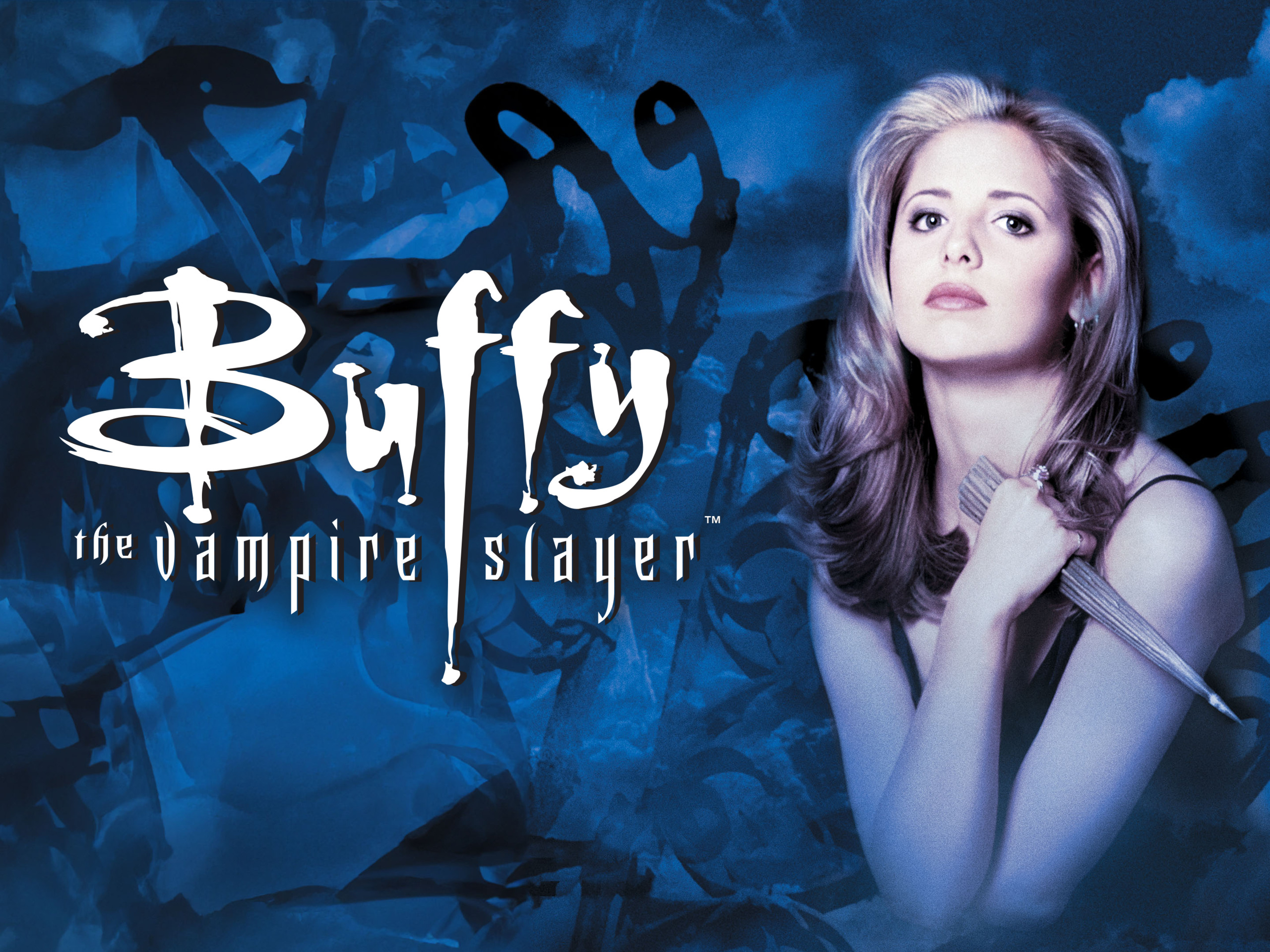
Trigger Warning: Discussions of sexual assault and rape.
In a lot of ways Buffy the Vampire Slayer was more than just a TV show…it was a feeling.
No. But it did change the way heroines were written and showed the world how awesome and self-aware supernatural comedies could be. In the mid-’90s to early ‘00s, Buffy influenced everything from fashion trends to the way we speak. The linguistic feature of speakers ending declarative sentences in an upward inflection (like everything is a question). This phenomenon, known as ‘upspeak’, became popular in the mid-90s to the horror of many a boomer.
Buffy was progressive in many ways for its time. A strong (yet at times, admirably vulnerable) relatable heroine. Buffy was cool, independent, and brimming with quippy comebacks. Buffy’s creator, Joss Whedon, may have turned out to be the bad guy but he did create an admirable main character and immerse us in her world. Buffy was one of the first primetime network shows to have a gay main character and a lesbian relationship. Lesbian-identified Willow Rosenberg ushered in a new age of sapphic style that helped generations of queer young people come out.
Throughout the show, Buffy has not one but two hot, badass vampire boyfriends. What’s not to love?
Well, as it turns out; a lot of stuff. Like many shows from that era, Buffy doesn’t always adhere to the morals and values of 2024. I am, and have pretty much always been, a Buffy obsessive (to varying degrees). Even I can admit the main cast wasn’t exactly diverse. There are of course insensitive comments and jokes that wouldn’t fly today, but what I want to focus on is the show’s treatment of sexual assault.
In Western culture, rape is seen as one of the worst that can happen to a woman, perhaps even worse than death. Throughout the series, Buffy (and her female comrades) is assaulted numerous times and threatened with rape even more.
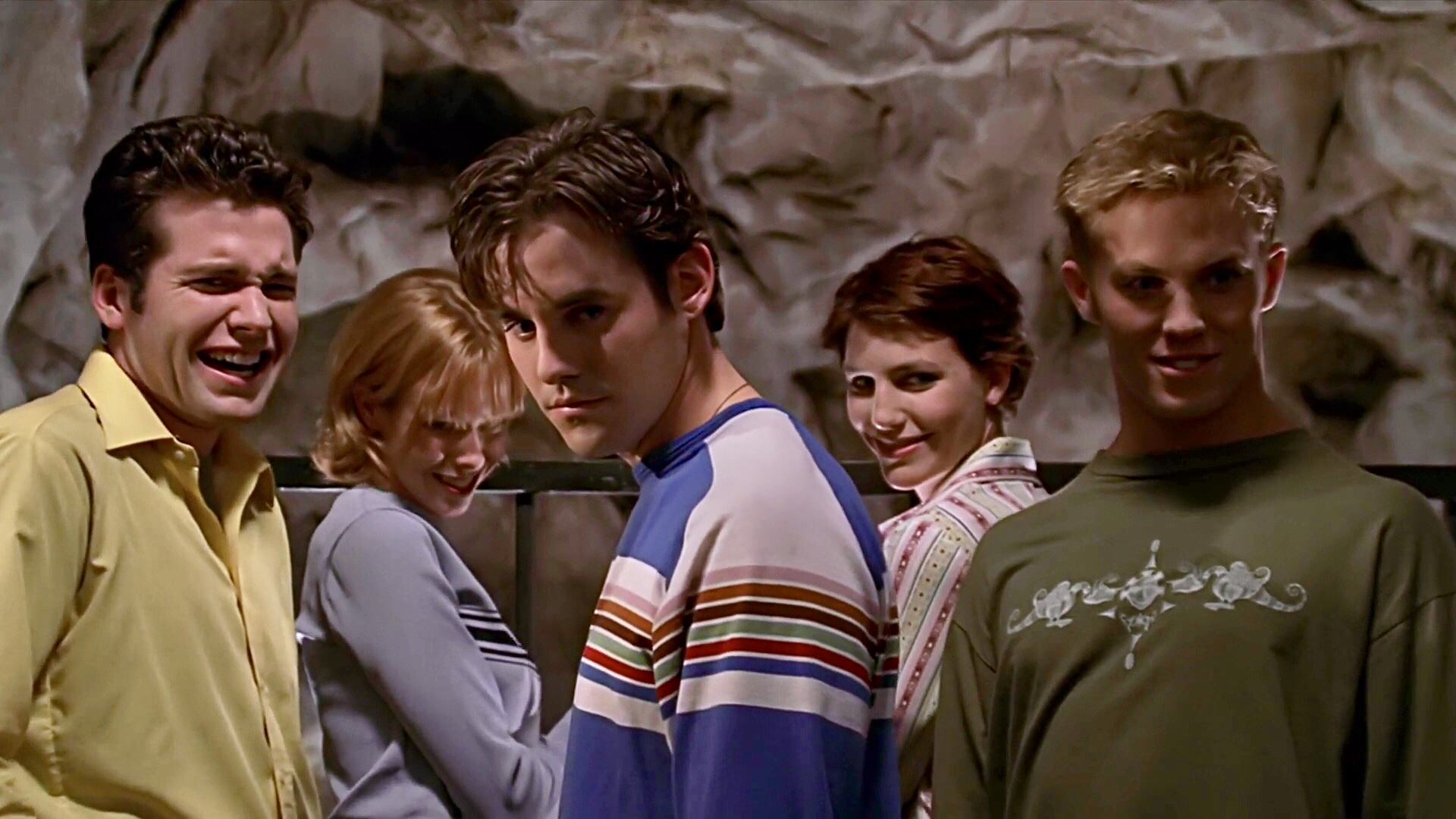
Season 1 Episode 6 – The Pack
In probably one of the weirdest plots, an early ‘monster of the week’ episode. Buffy’s closest male friend is possessed by the spirit of a hyena on a class zoo trip (it happens).
To a lot of modern fans; Xander is the archetypal ‘toxic nice guy’. Identifies as a feminist but regularly slut shames his female friends and has different rules of conduct for them than he does for himself. Regularly treats his romantic partners as less than or infantilizes them. Xander’s questionable behavior aside, this is the first episode where his true nature perhaps shines through.
Up until this point he had been attracted to Buffy. The slayer’s disinterest in anything other than friendship had caused him to act petulant and snidey in ways only a teenage boy can. As loathe as I am to compliment Nicholas Brendon (‘Xander’) the complete personality shift he embodies for possessed Xander is laudable. He’s confident, cruel, and highly sexual. Even vampiric some might say.
Possessed Xander’s newfound animalistic urges lead him to attack Buffy with a strength that matches her own supernatural strength. In an uncomfortable scene, he pins her to a vending machine and tells her: “The more I scare you…(SNIFFS)…the better you smell.”
Buffy escapes by knocking Xander unconscious and remarks to Willow that Xander “tried his hand at felony sexual assault”. It could be argued that Buffy is making light of her trauma by joking about it. However, at the end of the episode, Xander pretends he remembers nothing about his possession but then admits to Giles that he does.
Other more popular recurring characters are forgiven for their horrific behavior due to their lack of souls (being vampires). However, the show never makes clear exactly what a soul is and how it affects a person’s intrinsic goodness. It is unclear what happened to Xander’s soul during his brief possession but the instance is never brought up again.
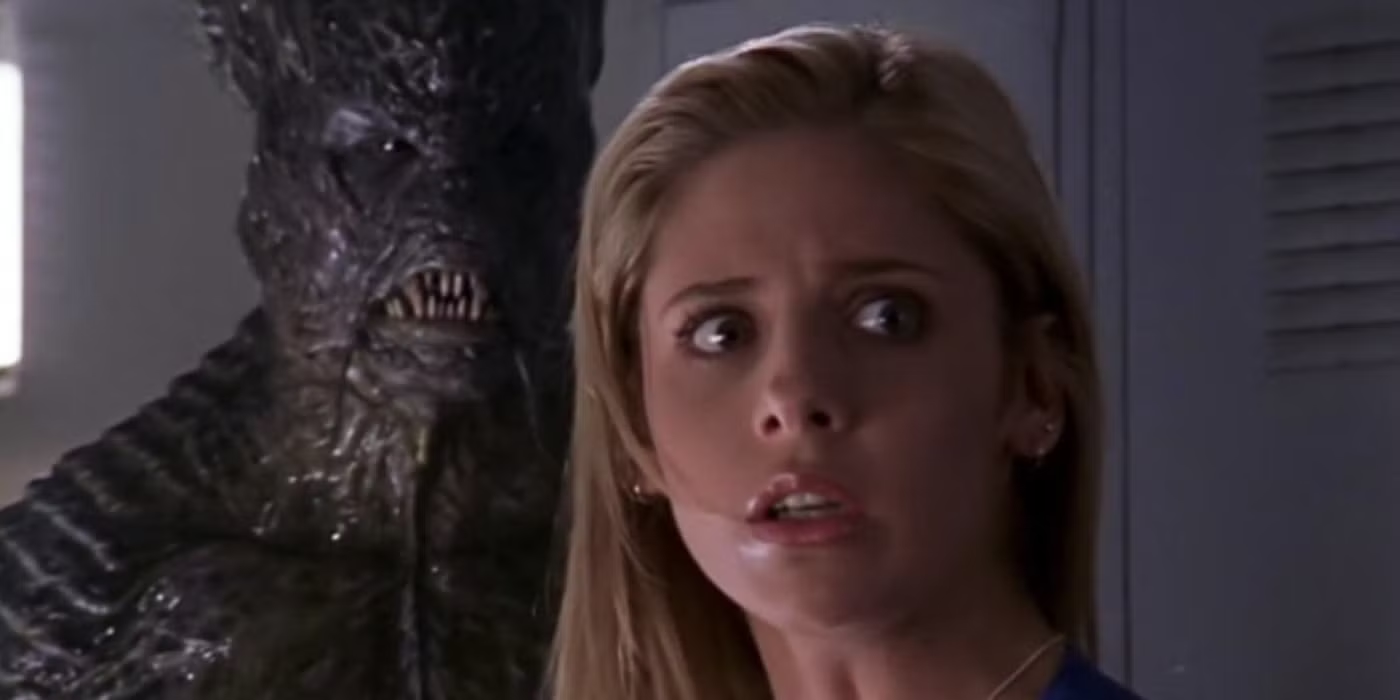
Season 2 Episode 20 – Go Fish
Yet another ‘monster of the week’ episode; the school’s swim team gets turned into sea monsters (again, it happens). Buffy goes on a date with a member of the swim team when she turns down his advances he locks his car door stopping her escape. When he tries to touch her she breaks his nose on the steering wheel. Buffy is blamed by the school for the way she dresses, almost every woman has heard that at least once!
The episode culminates with Buffy being thrown into a sewer with the monstrous swim team by the evil coach. The coach remarks that ‘his boys have already eaten “but boys have other needs”. Threatening our 17-year-old heroin with gang rape. Buffy of course jokes about her predicament and is saved in the nick of time.
It could be speculated that as Buffy is a metaphor in itself that the writers were trying to make a statement about how female victims of young male sports stars are treated.
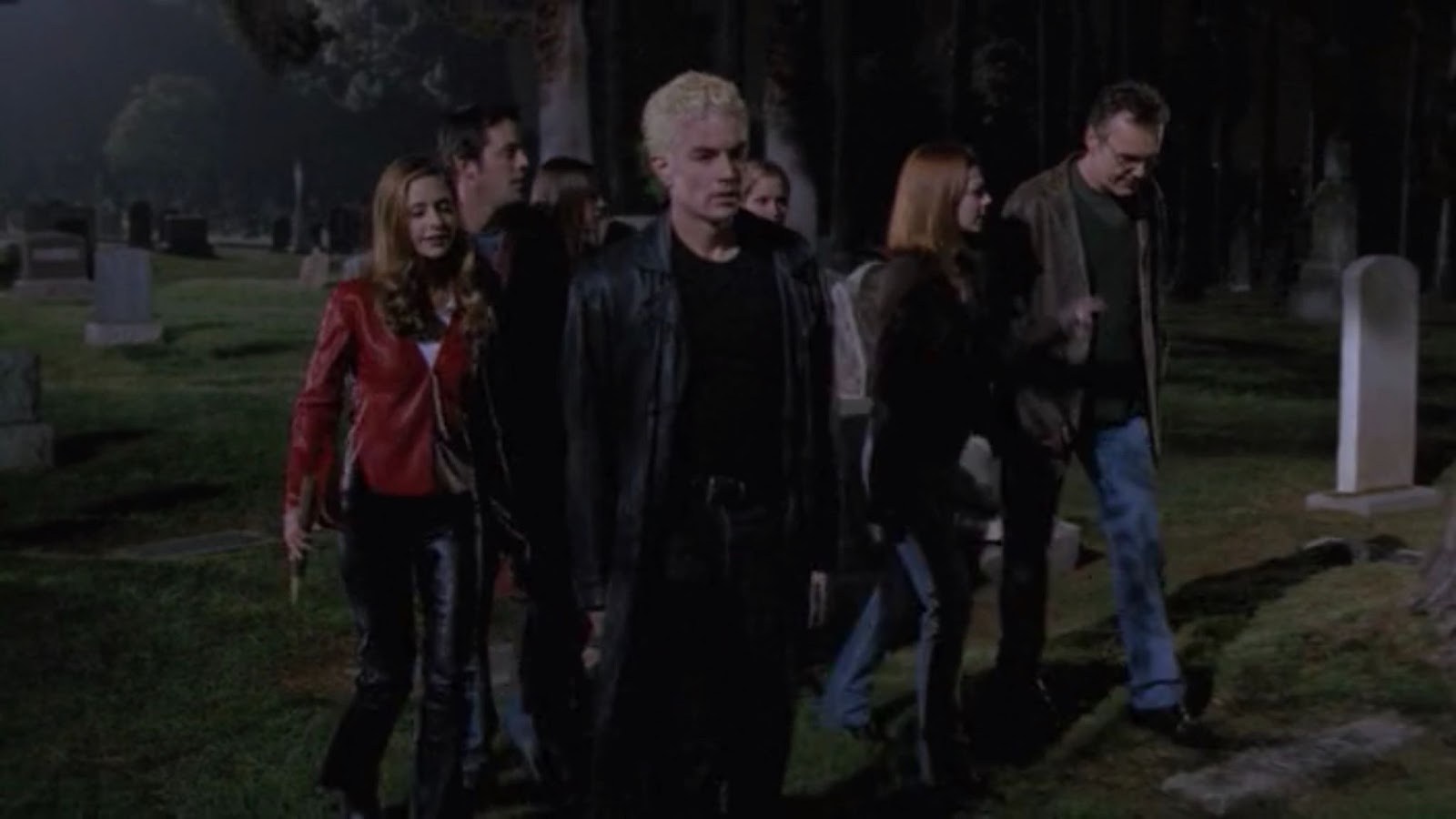
Season 6 Episode 1 & 2 – Bargaining
Season 6 is extremely controversial within the Buffy fandom. Arguably the most polarising of the seasons. Whether you love it or hate it (I love it, just putting that out there) everyone agrees it’s the darkest season. Fittingly the season opens with Buffy being brought back from the dead and digging herself out of her own grave.
A gang of heavily pierced demons is attacking the town and is torturing the Buffybot (a replacement robot for the erstwhile slayer obviously). The head demon refers to Buffybot as “nothing but a toy, a pretty toy” in a sinister and arguably sexual way before we see her being torn limb from bionic limb.
If that’s not bad enough the head demon threatens Buffy’s friends (Xander, Anya, Tara, and Willow) by saying; “we’re just gonna hold you down and enjoy ourselves for a few hours”. He also brags about his gang’s “anatomical incompatibilities that tend to tear up little girls”. The blatant and graphic threat of gang rape disturbed a lot of fans. Was this a sign of things to come with the new direction the show was going in?

Season 6 Episode 19 – Seeing Red
And here we are. We couldn’t talk about the most controversial season of Buffy without discussing its most controversial episode. Seeing Red has fan favorite Spike (vampire) attempting to rape Buffy in her own bathroom after she is injured while vampire slaying.
Throughout most of season 6 Buffy and Spike kindled a sexual relationship. Despite the writers prefacing the two as a metaphor for a toxic relationship, the couple are championed by fans to this day.
The scene itself is horrific. I can recall watching it when it was aired at the age of 12 hesitantly through my mum’s plants it was that awful. On a recent rewatch I committed myself to watching it again thinking it can’t be as bad as I remember, despite always fast-forwarding that bit on my videos (yes, I’m that old). It was as bad as I remembered.
The scene was heavily choreographed with alternating close-ups of Buffy and Spike (separately) to inspire the audience’s empathy with each character. Along with the being so brightly lit, the scene is extremely disorienting. The choice of lighting makes the actors look all too human.
Encouraging empathy for both victim and perpetrator during a rape scene is an interesting premise. Personally, I liked how multilayered and complex Buffy and Spike’s relationship was for what was billed as a teen drama. But I, like many, was traumatized by this scene. James Marsters, who played Spike, calls shooting the scene; “the darkest professional day of my life” (Marsters J, 2024) and sends him to therapy. Buffy herself, Sarah Michelle Gellar (Gellar S, 2024) is quoted as saying that she skips that particular episode while watching with her young family.
Many conspiracies were discussed after the airing of the episode. Many thought that it was creator Joss Whedon’s way of getting the audience to hate Spike. Whedon made no secret about hating Spike and had to be talked into making the series regular due to his popularity. As tempting as it is to blame Whedon, he was barely involved in the show at the time.
It is commendable that Marsters (outing myself as a fangirl here) is willing to honestly talk about how the episode affected him personally and the fanbase. Unfortunately, the show failed to properly address Buffy’s trauma. Despite showing her having PTSD-like flashbacks to the attempted rape when seeing Spike again in Season 7.
To me, Buffy has always embodied everything that is great about being a woman. She’s strong, resilient, and unapologetically feminine. Her story is one of triumph against all odds while still staying true to herself and empowering her friends along the way. As Buffy is a feminine story perhaps it is appropriate that it shows the unfortunate side of being a female presenting person. Women are assaulted regularly and usually by close friends someone they are on a date with or someone they’ve had a sexual relationship with. Many have argued that the handling of these scenes was clumsy or even irresponsible. This may be true but having someone as inspiring as Buffy Summers overcome and thrive after an assault could prove that anyone can and make victims feel less alone.
Buffy is, as always, a source of strength for many.


